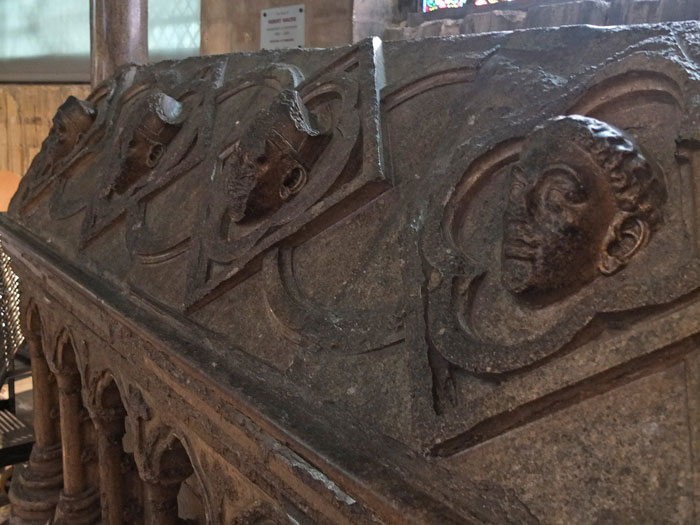Archbishop of Canterbury (1193–1205)
Hubert Walter was an important royal adviser in his positions of Chief Justiciar of England and Lord Chancellor. He died at his manor in Teynham, after a long illness, and his body was taken to Canterbury to be buried in the cathedral the following day. Elias of Dereham was one of the named executors in Walter’s will and as such he may have been in charge of the construction of Walter’s tomb. Matthew Reeve has suggested that the work may have been carried out under the guidance of William the Englishman who may have still been working in Kent until the second decade of the thirteenth century, should the extant records refer to the same William. Walter’s tomb is the earliest surviving tomb in the cathedral and is located in a window opening on the south side of the south ambulatory of the Trinity Chapel. The tomb, much damaged, has the appearance of a shrine or of an ancient sarcophagus and Walter’s extensive travelling in Europe on behalf of the crown may have brought him into contact with tombs of similar design.
The tomb is made of Purbeck Marble and is an early medieval use of this polished stone for a tomb. The gabled cover has six heads, bearing various head gear. From east to west they have been identified as a young man (east end), a layman, a bishop, a second bishop, a monk and a wimpled lady (west end). From the list of Walter’s benefactions given by Gervase, Pamela Tudor-Craig has pointed out that Walter may have been “a connoisseur of fine metal work”. She makes an astute observation that, “the lobes of the quatrefoils along the gable of the tomb jut out at the ends like ears, a feature most wasteful and laborious to cut in Purbeck marble, but quite natural in applied metal.”
By 1890 the identity of the tomb’s incumbent was uncertain and to determine who the occupant was the tomb was opened up. The coffin inside was found to be made of Caen Stone and, once opened, the contents drawn and recorded. The items recovered included a chalice (cup) and paten (small plate) The paten had the inscription: “The altar represents the cross, and the chalice the tomb, and the paten the stone…”. Christopher Daniel has suggested that the chalice and paten, as well as being symbols of ecclesiastical office, may also represent Christ’s tomb and the stone before it.

